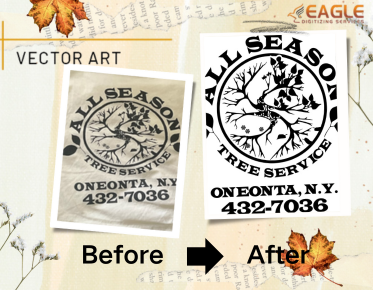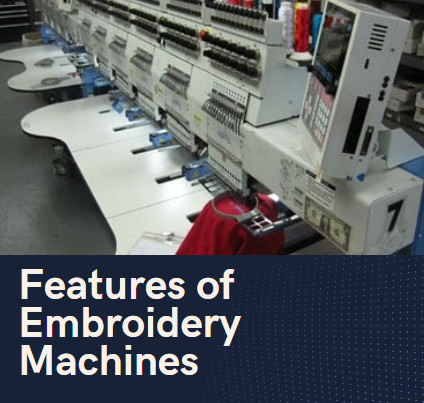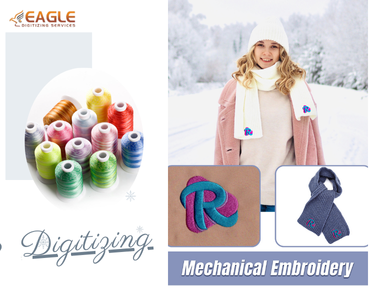What Are the Different Screen Printing Methods for Beginners
At its core, screen printing involves using a mesh screen to transfer ink onto a surface, such as fabric or paper, except where areas have been blocked out with a stencil. The process relies on the mesh’s ability to let ink pass through, but only through the parts of the screen where no stencil is applied. The result is a clean, sharp design on the chosen material, making it ideal for producing multiple copies of the same image. Whether you're creating intricate artwork or simple graphics, screen printing offers flexibility in design, allowing for various textures and finishes depending on the ink and technique used.
Why
Is Screen Printing So Popular Among Beginners?
The appeal of screen printing lies in its versatility and the tactile
nature of the process. Beginners are often drawn to the method because it
offers both simplicity and room for creativity, which makes it highly
accessible for those who are new to printing. This hands-on approach also
allows beginners to explore different textures and finishes, helping them gain
a deeper understanding of the materials they’re working with. It’s also a
relatively low-cost entry point for people wanting to create custom designs,
and many local shops offer classes or workshops, providing the support and
knowledge necessary to get started.
The
Process Simplified: A Step-by-Step Overview
The
basic screen printing process involves several key stages: preparing your
screen, creating your design (usually using a stencil or emulsion), setting up
your material, and finally, pressing ink through the screen onto the material.
In each stage, attention to detail and timing are crucial for ensuring a
high-quality print. During preparation, you’ll also need to ensure your screen
is properly aligned and secured before beginning the printing process. While the
process may sound simple, the technique requires precision and practice to
achieve consistently great results, and each step builds on the previous one,
providing a rewarding experience.
Essential Tools You Need to Get Started
To
begin screen printing, you'll need a few essential tools. These include the
screen (the mesh frame that holds your design), a squeegee (used to spread
ink), a work surface, and a source of light for exposing your screen. Quality
tools make a big difference, as they contribute to the consistency and clarity
of the print. Beginners often start with DIY kits that include the basics, but
as you progress, you may find it beneficial to upgrade your tools. Investing in
a good squeegee and a durable frame can enhance your results and make the
process smoother as you develop your skills.
Key
Materials: Screens, Inks, and Emulsions
The
screen itself is made from a fine mesh material that holds the stencil,
typically polyester or nylon, and it plays a significant role in the final
quality of the print. Inks come in a wide variety of types, from water-based to
plastisol, each offering different textures, finishes, and durability.
Water-based inks are popular for their soft feel and eco-friendly nature, while
plastisol inks are often used for their durability and vibrant colors.
Emulsions are light-sensitive coatings that help to transfer your design onto
the screen, and they’re crucial for ensuring that your design is crisp and
clean when printed. Choosing the right combination of materials can greatly
impact the outcome of your print, so it's important to experiment with
different types.
Types
of ScreenPrinting Methods
Screen
printing comes in several variations, each designed for specific needs and
materials. Let’s explore some of the most popular methods. Some methods, like
traditional screen printing, offer a hands-on, creative experience, while
others, such as DTG printing, offer convenience and speed. Depending on your
project, you might find yourself choosing one method over another based on how
much control you want over the process, or how quickly you need results.
Exploring different techniques will not only improve your skill set but also
help you decide which method suits your business or hobby best.
Traditional
Screen Printing: The Classic Approach
Traditional
screen printing is the most well-known technique, and it’s still widely used in
both commercial and DIY settings. This method involves manually setting up a
stencil on a mesh screen, then applying ink by hand or machine, giving you full
control over the printing process. It’s perfect for those who want to maintain
a personal touch in their work, whether it’s a small, custom order or a larger
batch of items. With traditional screen printing, you can achieve high-quality,
bold designs with vivid color, and it remains a favorite among small business
owners, artists, and hobbyists alike.
Modern
Screen Printing: Innovations for Better Results
As
technology has evolved, so has screen printing. Today’s modern methods include
innovations like automatic presses and advanced inks that provide
higher-quality prints with greater efficiency. These advancements have allowed
for quicker production times and more consistent results, which is essential
for commercial and large-scale projects. These innovations have made screen
printing more accessible to beginners by simplifying some of the complexities
of the process. However, even with modern technologies, the essence of screen
printing remains the same, allowing for a tactile, hands-on experience that
keeps the craft authentic.
Direct-to-Garment
(DTG) Printing: The Digital Twist
DTG
printing is a digital version of screen printing that allows you to print
directly onto garments using a specialized inkjet printer. Unlike traditional
methods, DTG printing eliminates the need for stencils or screens, making it an
appealing option for those who want to print complex designs with intricate
details. While it’s not the same as traditional screen printing, it offers
similar results with the added benefit of easier setup and the ability to print
on demand, which makes it ideal for smaller runs or one-off items. Beginners
interested in DTG will appreciate the simplicity of the process, but it’s
important to note that the prints may not be as durable as those made with
traditional screen printing methods.
Heat
Transfer Printing: Combining Heat and Pressure
A technique called heat transfer printing transfers an image onto a surface by applying pressure and heat. This can be done using heat transfer paper, vinyl, or sublimation ink, and is commonly used for producing vibrant designs on fabrics. Heat transferprinting is particularly useful for printing small quantities of multi-colored designs, but it has its limitations, especially in terms of durability and texture. The method is quicker than traditional screen printing and doesn’t require specialized equipment like a screen or squeegee, which makes it appealing for beginners working with simpler designs. However, it’s worth noting that the prints are less long-lasting, especially when subjected to washing and wear.
Rotogravure Printing: Precision Meets High-Speed Production
Rotogravure
printing is a high-speed, precision method typically used for large-scale
printing, such as magazines or packaging. The process uses engraved cylinders
to transfer ink to the printing surface, which allows for fast production rates
and high-quality results. This method is commonly used in industries that need
to produce large volumes of printed material, like newspapers and catalogs.
While rotogravure printing is not typically a method chosen by beginners due to
the specialized equipment involved, understanding its capabilities can help you
appreciate the broader spectrum of printing techniques. It also provides
insight into how large-scale commercial printing works, which can be valuable
knowledge if you wish to expand your skills.
Exploring Different Screen Printing Techniques
Now
that you’re familiar with the primary screen printing methods, let’s delve into
the various techniques within those methods. Each technique offers different
advantages and challenges depending on the material, the design, and the volume
of prints. Some techniques, like flatbed screen printing, are perfect for small
projects, while others, like cylinder screen printing, are more suited for
large, high-precision productions. Exploring these methods will help you gain a
deeper understanding of how screen printing can
be adapted to suit different needs, and can expand your creative options for
future projects.
Flatbed
Screen Printing: Versatility for Small to Medium Runs
Flatbed
screen printing is the go-to technique for small to medium runs of prints. The
process involves placing the material flat under a screen and manually pressing
the ink through, which allows for full control over the application of ink.
This method is ideal for printing on a wide range of materials, including
t-shirts, posters, and promotional items, and is particularly well-suited for
beginners due to its simplicity and hands-on nature. It also offers the
flexibility to print designs that require precise alignment, making it a
favorite choice for small business owners or hobbyists who want to experiment
with different designs.
Cylinder
Screen Printing: High Volume, High Precision
Cylinder screen printing uses a cylindrical screen to transfer ink onto the material as it rolls through the machine, making it ideal for high-volume printing projects. This method is commonly used for printing on cylindrical objects, such as bottles, cans, and tubes, but it can also be applied to flat surfaces in high-production environments. The advantage of cylinder screen printing is its precision and ability to handle large runs efficiently, but it’s not typically a method chosen by beginners. However, understanding its capabilities can be beneficial if you plan to scale your printing efforts or take on larger, commercial-grade projects in the future.
Automatic vs Manual Screen Printing: Which One Should You Choose?
When
starting out, most beginners opt for manual screen printing, as it’s
cost-effective and provides more hands-on control. Manual presses allow you to
learn the intricacies of the process and gain experience in handling each step
of the printing workflow. On the other hand, automatic screen printing presses
are more efficient for large-scale printing, allowing you to produce high
volumes of prints with less labor involved. While the initial investment for an
automatic press can be higher, it’s an option worth considering if you plan to
expand your production and need to print large quantities quickly. Each method
has its benefits, so beginners should consider factors like budget, production
needs, and desired learning experience before choosing.
Four-Color
Process Printing: Creating Vibrant Full-Color Designs
The
four-color process printing method combines four base colors—cyan, magenta,
yellow, and black (CMYK)—to create full-color designs, making it ideal for
producing vibrant, multi-colored prints. This technique uses a layering
process, where each color is applied separately, building up to create complex
images with rich detail. It’s a great choice for beginners who are working with
photographic or gradient-heavy designs and want to achieve high-quality,
full-color results. However, because of the intricate process involved, it
requires careful alignment and precise registration, which may take a little
practice to perfect.
Spot
Color Printing: Bold and Simple Graphics Made Easy
Spot color printing uses pre-mixed inks to create solid, vivid colors, making it ideal for logos, text, and simple graphic designs. This method involves applying one color at a time to the material, which results in crisp, bright colors that pop. Spot color printing is easier to set up than the four-color process, making it an excellent option for beginners who are looking to print clean, bold designs without the complexities of color separation. It also offers a more efficient and cost-effective solution for designs that don’t require the use of many colors, allowing you to produce high-quality prints with fewer steps.



